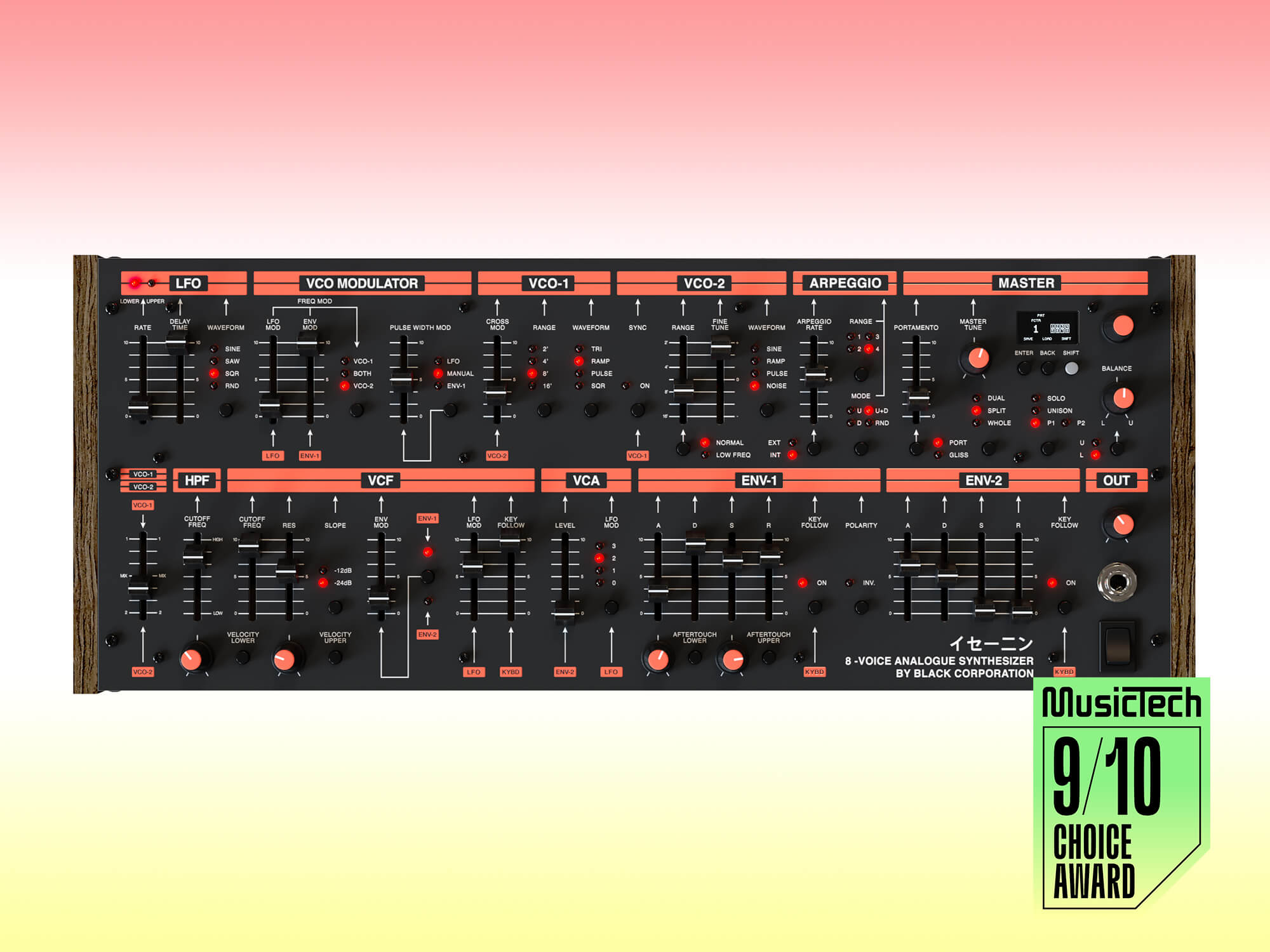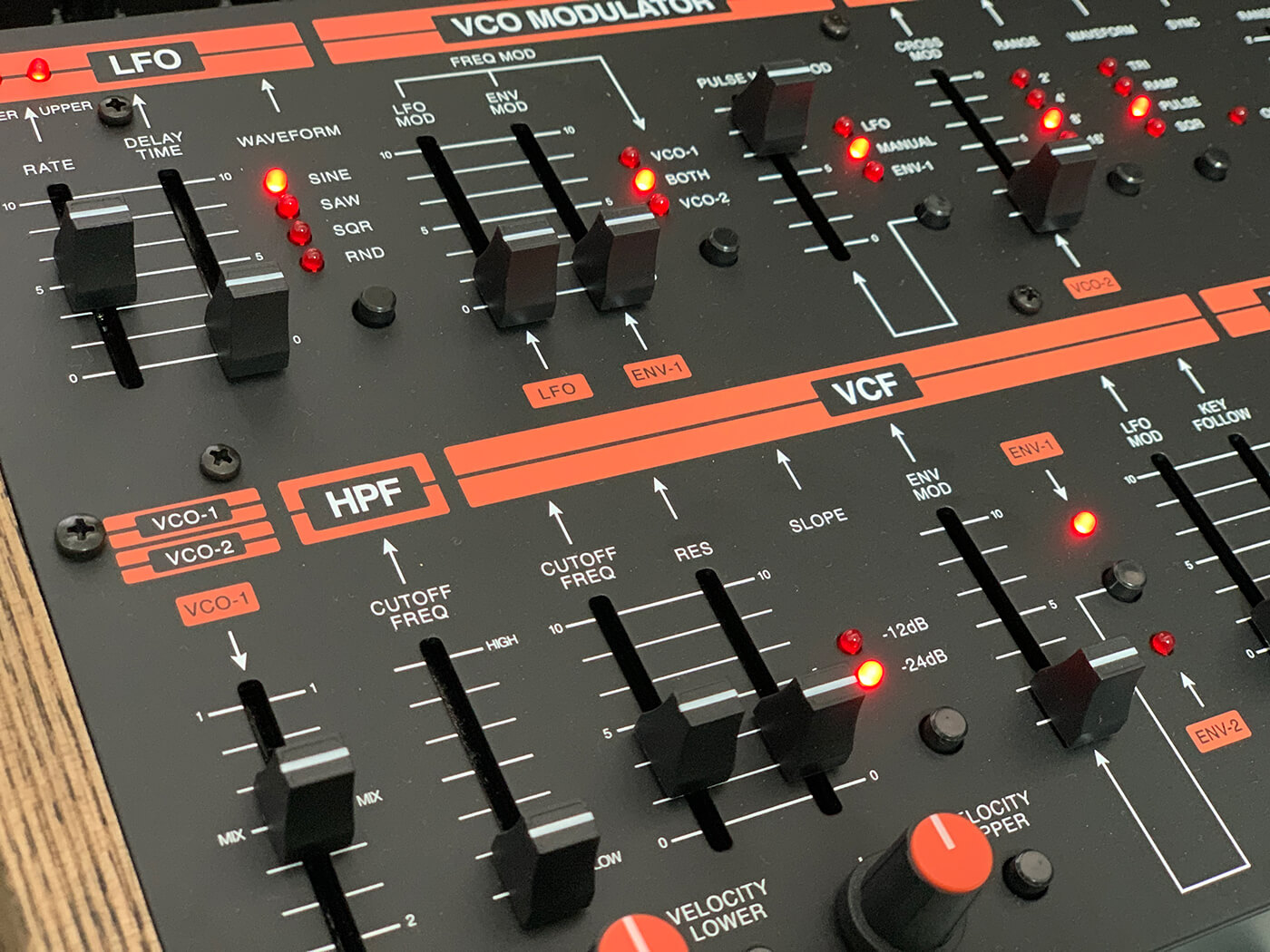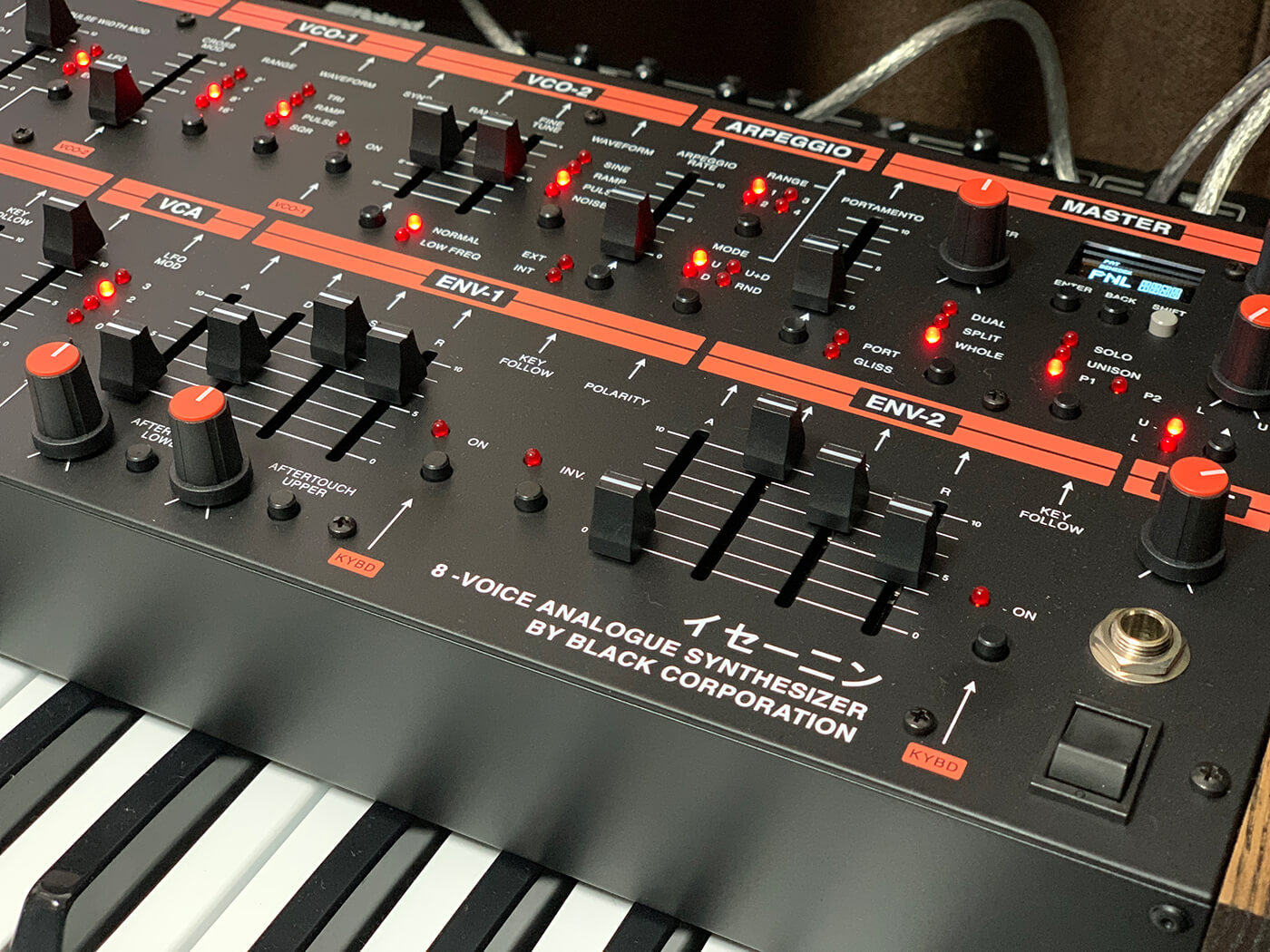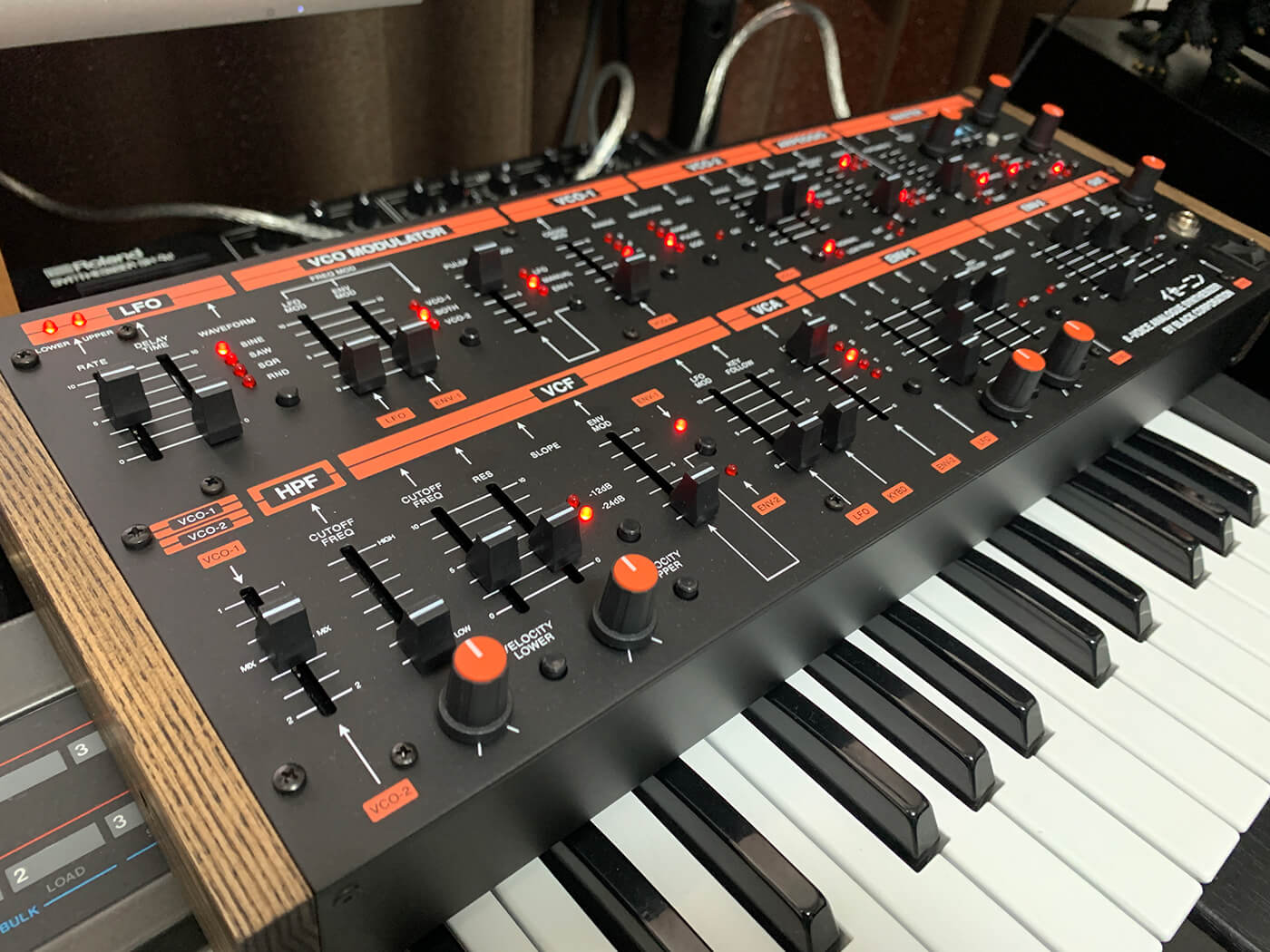Black Corporation’s ISE-NIN shoots for Jupiter – and lands lavishly
Analogue synth module ISE-NIN is inspired by the Roland Jupiter-8 and does an impeccable job – and so it should for $4,299

Black Corporation ISE-NIN
Review Overview
Our rating
9
Our verdict
⊕ Wide sweet spot
⊕ Musically inspiring
⊕ Will satisfy most musicians’ Jupiter-8 cravings
⊖ Expensive
⊖ Menu is on the cryptic side
$4,299 built, black-corporation.com
Few synthesizers quicken the pulse like Roland’s 1981 polysynth, the Jupiter-8. Touted by many as polyphonic perfection, it found its way into the top studios of the world as well as the personal collections of well-to-do musicians. Though pricey upon its release, its legendary status has only grown over the years, ensuring extravagant second-hand prices that keep it out of the hands of all but a select few. For the non-select rest of us, there’s ISE-NIN, a very Jupiter-inspired analogue synthesizer module from boutique company, Black Corporation.
Inspiration, not replication
As with many of Black Corporation’s other instruments, ISE-NIN (styled as イセーニン in Japanese katakana) is not quite a clone. While its panel layout and colour scheme are extremely reminiscent of the JP-8, it also has some differences. Chiefly, it’s a module and not a 61-key unit. Also, there are key differences on the inside, mainly in the way that it approximates the discrete circuitry of the original. There are modern additions as well, such as MIDI Polyphonic Expression (MPE). Because of all this, it’s best to think of it as a Jupiter-inspired instrument and not a clone, and thus to judge it on its own merits and not how close of a reproduction it is.
How sweet the sound
The ISE-NIN may not sound exactly like a Jupiter-8, but it sure is sweet. On the whole, it’s wonderfully musical and, like the Jupiter, it has a sweet spot as wide as the planet that gave it its name. This is the main reason that Roland’s original is so prized; no matter the kind of sound you’re aiming to make, it can do it and do it with aplomb. In this way, ISE-NIN is the same. Gorgeous chords, striking bass (oh, those snappy envelopes!), lovely pads, commanding leads, even clangorous effects courtesy of oscillator cross-modulation. You name it, ISE-NIN can do it and do it well.
As you might expect, it’s very Japanese-sounding. Clean and tight rather than wild and woolly like an American poly, ISE-NIN is always polite but never wimpy. A metaphor involving Japanese martial arts comes to mind: your opponent will politely bow to you before throwing you to the ground with great force. That’s the sound of ISE-NIN in a nutshell. It’s also an inspiring one that invites you to keep playing it, something that you should never downplay in a musical instrument.

Synthesis and extras
If you’re unfamiliar with the synthesis architecture of the original JP-8, it may be useful to take a quick whistle-stop tour of ISE-NIN’s main panel. It’s a two-oscillator analogue synth, with each of these VCOs getting a different selection of waveforms: triangle, ramp, pulse and square on VCO-1, with VCO-2 replacing the triangle with a sine wave and square with noise. You can modulate the pulse width manually, by envelope or via the (single) LFO. That LFO features sine, saw, square and random wave shapes and, along with pulse width, can affect the VCOs independently or together, as well as the filter. You can use the second oscillator as an LFO as well.
The very-Roland low-pass filter has 12- and 24dB-per-octave modes and sounds wonderful and musical. There’s also the expected Roland-style non-resonant high-pass filter. Continuing, there are two envelopes; one for the VCA and one for the VCF. Additional parameters include portamento and glissando, oscillator sync and cross modulation, unison and mono modes, an arpeggiator, and, of course, the layers. While ostensibly an eight-voice poly, ISE-NIN supports layers and splits, allowing you to create full and rich patches that double the synthesizer sound although at the expense of polyphony.
Modern enhancements
ISE-NIN wasn’t made in 1981 and so has a number of modern, digital enhancements, including microtuning, a drift parameter to add in analogue slop, and much-welcome MPE support. There are no effects though. USB MIDI and audio complement the conventional MIDI in/out/thru sockets and balanced stereo audio outputs. The OLED screen, although small, is nice to have and is immensely more convenient than the two-character LED displays of the original.

The one area where ISE-NIN falters is in its menu structure. Thankfully, most controls are knob-per-function, with the panel being what-you-see-is-what-you-get. However, it’s precisely because most of the instrument is so intuitive that using the menu can be a little frustrating. Ultimately, this is just a quibble, and once you’ve used the menu a few times you’ll become used to the oddly named buttons and combinations.
Built like a knife
ISE-NIN sounds great but how is the build? A number of online reviewers have mentioned that the ISE-NIN feels a little flimsy and that, given the price (more on this later), it should be more substantial.
The chassis is made from aluminium and, with its power supply on the outside courtesy of the supplied wall wart, the whole affair is fairly lightweight even, when factoring in the wooden end cheeks. In the comments section for Dungeon Music Theatre’s YouTube video review, Black Corporation business manager Bob Rogue responds, “To explain the aluminium choice over steel, we ship these from Tokyo worldwide. Size and weight were big considerations to keep the shipping price and the carbon footprint low.”
He goes on to explain that Black Corporation made original revs of Deckard’s Dream, the company’s Yamaha CS-80-styled synth, in steel and “it was heavy AF”. He also mentions that the chassis is prepared in Tsubame Sano, an area of Japan famous for its metal working. Yes, the same people that forge sushi knives bang out ISE-NIN bodies. Those end cheeks? They’re made from Tamo, a Japanese ash common in musical instruments. And while the knobs and sliders are a little on the wobbly side, so are those on our Juno-106.

To Jupiter and beyond
Overall, ISE-NIN is a gorgeous thing. It sounds wonderful, is inspiring to use and play, and has enough extras and accoutrements to take it beyond the fairly basic synthesizer that inspired it. And while it may not sound exactly like an original Jupiter-8, it sounds pretty close. It also gets all of the other things – wide sweet spot, usability and musicality – spot on. Plus you won’t have to sell your house to afford one, like you would an actual Jupiter-8.
But the ISE-NIN isn’t cheap; far from it. Its price of $4,299 fully assembled (kits are currently sold out) is without doubt an investment and certainly not for everyone. If this is beyond your means (and no shame if it is – this is firmly a luxury item), there are plenty of top software Jupiter-8 emulations out there. However, ISE-NIN does sound better than them, and by a wide margin. Whether that margin is worth $4,000, though, is something you will have to decide for yourself.
Kudos to the engineers and designers at Black Corporation for creating ISE-NIN. It’s the perfect blend of synthesis options and sound quality; versatile enough to yield a wide sound palette but never overly complicated. And, most importantly, never at the expense of sound quality.
Key features
- Jupiter-8-inspired poly synth
- 8 voices (reduced to 4 when using layers or splits)
- 2 VCOs with a variety of waveforms
- Cross mod and oscillator sync
- 12 and 24dB/octave resonant low-pass filter and non-resonant high0pass filter
- 1 LFO
- 2 ADSR envelopes
- Arpeggiator
- MPE support
- 1280 preset memories
- OLED display
- DIN MIDI in/out/thru
- USB MIDI/audio